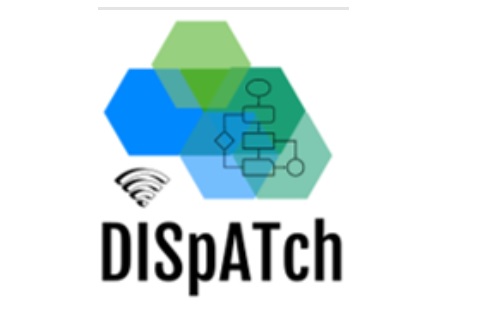
With this research project we combine forces with three universities (VUB, KU Leuven and UHasselt) that have expertise in different aspects of synchromodal transport. The objective is to develop a digital twin to further enhance the synchromodal concept and make synchromodal transport a reality in Flanders to boost the competitiveness and sustainability of its logistics sector.
To date the synchromodal concept remains rather theoretical and it is not well measurable due to the lack of an appropriate platform to provide reliable assessments in a highly dynamic and real- time environment. Such a platform would be able to mimic the current real system, but also simulate how it could evolve. The objective of this project is to develop such a platform in order to test dynamic planning algorithms and communication technologies which are also the main enablers for implementing synchromodal transport.
The platform will operate like a digital twin that mimics the physical reality on a digital platform. It will address questions such as how much to transport, when and by using which transport mode? How can we integrate replenishment decisions and inventory cost calculation within the transport planning process? How can collaboration between shippers and/or logistics service providers in an open logistics network enhance the sustainability and cost-efficiency of supply chains?
The project will focus on organizational and technical enablers for seamless synchromodal transport services in Flanders. Given the real-time dynamics and flexible nature of synchromodal transport, different transport modalities and actors need to work together and adapt according to unexpected events and contextual information that affect transport processes. These events and contextual information are related to negative as well as positive perturbations that shape freight movement and transport mode selection, such as newly incoming orders, transport delays, cancellations, collaborative bundling opportunities, accidents, water levels, strikes and many more.
Crucial elements in this regard are situational awareness of the current system state and projections of how the system will evolve once different actors take different actions. We will consider individual company objectives at micro level and network objectives at macro level.
Our platform will be represented by a digital twin in order to provide a testbed for synchromodal opportunities within a risk-free environment. A digital twin is a virtual environment that mirrors the real physical system (a physical twin) and its processes by updating its virtual real-time status from various sources of information regarding weather forecasts, congestion levels, positions of assets (barges, trains, trucks) and their ongoing working conditions. By means of the digital twin, effects of sensor technology and information exchange can be studied in combination with physical flows. Such a risk free environment allows for analysis and evaluation of triggering events (new orders, disruptions, delays...) which induce physical movements, and vice-versa, physical movements may trigger information flows once certain assets arrive at a specific location or enter a geo-fence.

